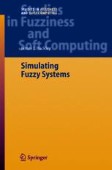Search
Filters applied:
Search Results
-
Machine Shop I
The queuing system in this chapter is shown in Fig. 11.1. This application was adopted from a problem in ([1], p.594). We continue this problem in...
-
Inventory Control II
This chapter continues the inventory control problem studied in the previous chapter. The new system is shown in Fig. 17.1. We have added two things...
-
Project Network Model
The project network diagram is in Fig. 26.1. This problem is modelled after an example in [2]. The project consists of various jobs that must be...
-
Queuing II: No One-Step Calculations
In this chapter we will study the fuzzy system shown in Fig. 5.1 now reproduced as Fig. 9.1. This example was adapted from an example in [1]. The...
-
Priority Queues
This chapter will use the queuing system in Chaps. 5 and 9, but with priority orders. The system is shown in Fig. 19.1. Everything is the same as in...
-
Fuzzy Probability Theory
In this chapter we look more closely at the fuzzy binomial distribution, the fuzzy Poisson, and at the fuzzy normal,exponential and uniform...
-
Simulation
Now we come to the point were we need to select simulation software to do all the crisp simulations staring in Chap. 7. The author is not an expert...
-
Fuzzy Estimation
sThe first thing to do is explain how we will get fuzzy numbers, and fuzzy probabilities, from a set of confidence intervals which will be...
-
Simulation Optimization
In this chapter we discuss how we plan to solve the optimization problems attached to the simulation as expressed in (5-4)-(5-5) in Chap. 5, or...
-
Optimizing a Production Line
The simple production line considered in this chapter is shown in Fig. 20.1. This problem has been adapted from an example in [1]. This situation is...
-
Queuing I: One-Step Calculations
In this chapter we show situations where simulation can produce the same results as fuzzy calculations which employ the extension principle. We argue...
-
Simulation Programs
In this chapter we present some of the GPSS programs used in Chaps. 9–26. We had to omit many programs in order to keep this chapter. less that 20...
-
Summary and Conclusions
The first objective of this book is to explain how many systems naturally become fuzzy systems. The second objective is to show how regular (crisp)...
-
Content Based Image Compression in Biomedical High-Throughput Screening Using Artificial Neural Networks
Biomedical High-Throughput Screening (HTS) requires specific properties of image compression. Particularly especially when archiving a huge number of...
-
Medical Bioinformatics: Detecting Molecular Diseases with Case-Based Reasoning
Based on the Human Genome Project, the new interdisciplinary subject of bioinformatics has become an important research topic during the last decade....
-
Discriminative Clustering of Yeast Stress Response
When a yeast cell is challenged by a rapid change in the conditions, be it temperature, osmolarity, pH, nutrient or other, it starts a genome stress...
-
Cancer Classification with Microarray Data Using Support Vector Machines
Microarrays (Schena et al. 1995) are also called gene chips or DNA chips. On a microarray chip, there are thousands of spots. Each spot contains the...
-
Random Voronoi Ensembles for Gene Selection in DNA Microarray Data
Currently, cancer and other complex pathologies are analyzed mainly by morphological classification. In the past few decades there have been dramatic...
-
Class Prediction with Microarray Datasets
Microarray technology is having a significant impact in the biological and medical sciences and class prediction will play an increasingly important...
-
Introduction
This book is written in two major parts. The first part includes the introductory chapters consisting of Chaps. 1 through 8. In part two, Chaps....
